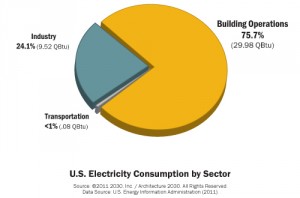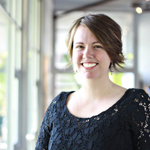Sustainable Urban Design
Many of us are familiar with the conversation around climate change and carbon emissions, and in recent years a growing importance has been placed on greener buildings with the implementation of evaluation systems for sustainability like LEED, SEED and CHPS. Ed Mazria was the keynote speaker for the AIA San Antonio at their Sustainable Urban Design Luncheon to address sustainability issues that are facing the building sector today.
Ed Mazria has built a strong reputation as an architect and as an author with his book, “The Passive Solar Energy Book”. But since 2002, his primary endeavor has been Architecture 2030, a non-profit organization dedicated to achieving a dramatic reduction in greenhouse gas emissions in the building sector. Ed Mazria got to the core of why systematic change in the way we design and build is essential.
Mazria estimates that by 2030, there will be 900 billion square feet of new and renovated buildings worldwide. Currently, over 75% of the energy consumption in the United States is used to operate buildings. The 2030 Challenge seeks to address the problem of fossil fuel consumption by mitigating the risks of climate change through thoughtful design interventions. The goal is to achieve carbon neutrality by the year 2030. Mazria asserts that simply incorporating the best available off the shelf building technology that we have now in coordination with incremental changes to the code, will make implementation of this goal a reality.
Although commitments to the 2030 challenge are significant, what gives me the most hope is the vision that has sprung from the initial challenge of carbon neutrality. The evolution of public private partnerships in community visions for healthier futures seems to be an unanticipated outcome.
Many Communities have created 2030 districts. These districts have stemmed from voluntary partnerships among a wide array  of stakeholders including property owners and managers, local governments, and the business community. These unique public/private partnerships have evolved beyond going along with the most recent iterations of a more stringent building code. The 2030 districts aim to create a collaboration of leveraged resources and shared goals, creating a model for urban sustainability.
of stakeholders including property owners and managers, local governments, and the business community. These unique public/private partnerships have evolved beyond going along with the most recent iterations of a more stringent building code. The 2030 districts aim to create a collaboration of leveraged resources and shared goals, creating a model for urban sustainability.
I left the Sustainable Urban Design Luncheon feeling hopeful. The role of architects, engineers and environmental designers in the built environment is essential. Over 900 billion square feet of buildings is an incredible responsibility to bear and I look forward to our role in the development of well-designed, sustainable, and healthy built environments.





